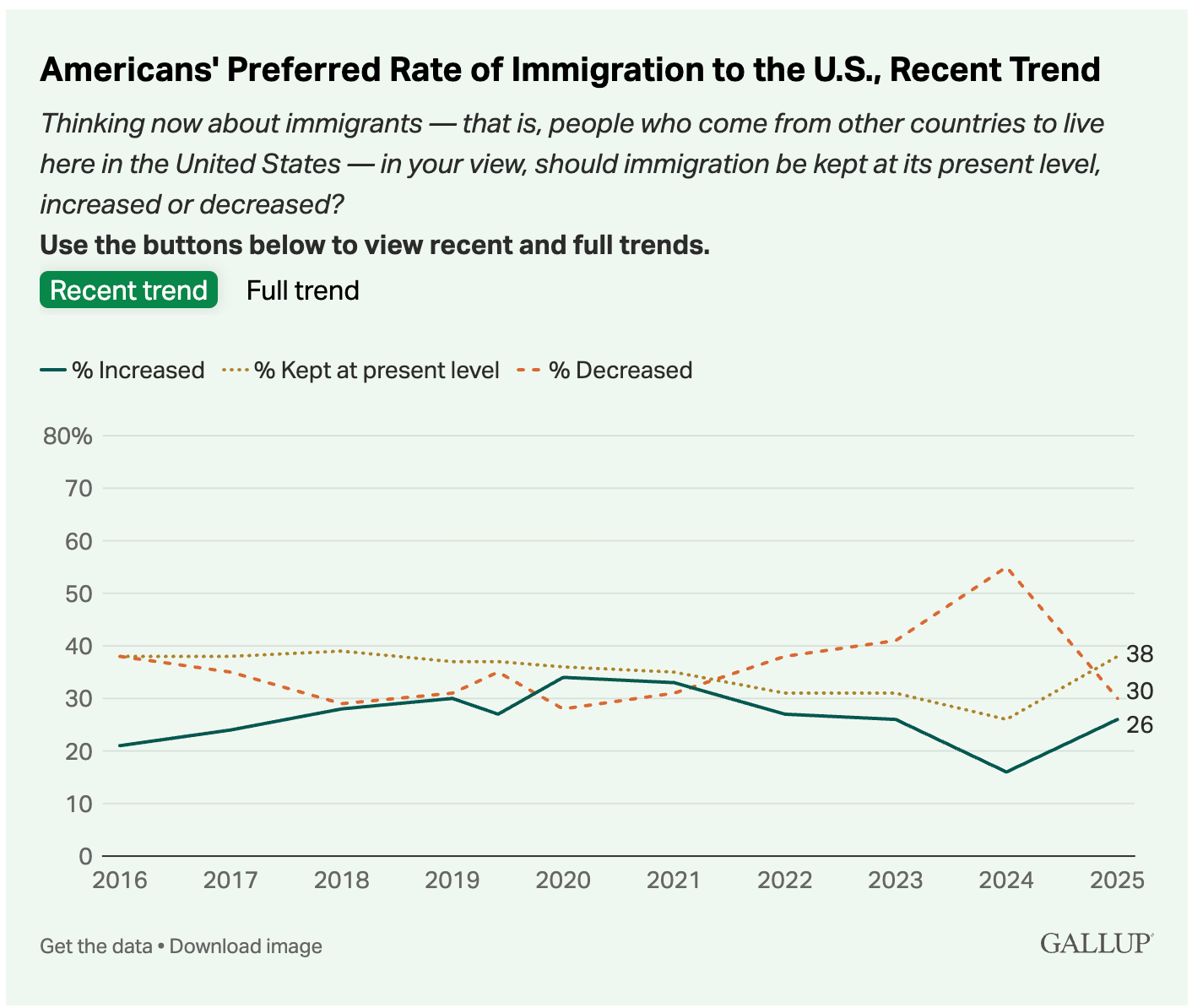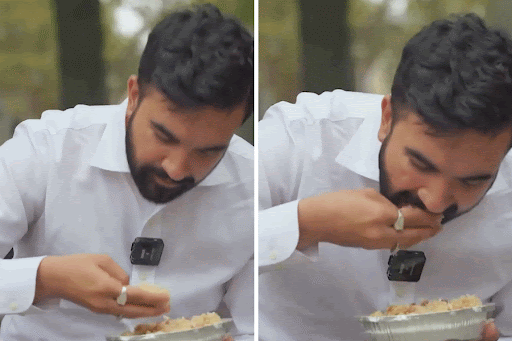17 observations on American Politics from an Indian in America
Thoughts on Donald Trump, Zohran Mamdani, Vivek Ramaswamy, caste and much more.
I haven’t really touched on American politics recently other than commenting on Zohran Mamdani. Zohran was a special case of someone getting outsized attention compared to the office he was running for. But there have been other developments in American politics that I thought are particularly interesting. These are nascent reflections that I haven’t had the chance to fully flesh out. If you have anything to say to these, feel free to leave a comment.
Let’s address the elephant in the room. Zohran Mamdani won the Democratic nomination for contesting the NYC mayoral election on the Democratic Party ticket. While many are understandably disappointed because of his politics, others are studying his campaign to understand whether his success can be replicated by other progressives. In my view, the progressive moment is over. A foundational assumption of the progressive movement is that future generations keep getting more liberal. Gen Z leans more Republican and is proving that assumption false.
In the same vein, it is amusing to see many Indian-American politicians support statism. Zohran Mamdani is just the latest in a long list of socialists. Pramila Jayapal, Kshama Sawant, Ro Khanna and Ami Bera are some examples. As is well known, until 1991 India’s economy had strong state controls on entrepreneurship along with being a closed economy. Real growth took off once capital controls had been relaxed. It is ironic that these politicians espouse the same policies that have led to lost decades in India.
H1Bs have become a political hot potato. There’s tons of research showing that increasing the cap on H1Bs leads to more efficiency gains in the economy. A significant part of the MAGA is against H1Bs. The number of Americans who want immigration to decrease is down from the highs it touched in 2021. In that way, public opinion is like a thermostat. When illegal immigration was at its highest levels during the Biden administration, public opinion turned against immigration. Now that Trump is using ICE as his personal thugs, public opinion is turning more favorable towards immigration. Having said that, I don’t see the H1B immigration pathway getting any better. Any letup on immigration — even one that’s beneficial to the nation as a whole — is opposed by MAGA Republicans. On the other hand, Democrats spend their political capital on immigration reforms for illegal immigrants and ignore H1Bs.
Caste is becoming salient in American politics. Seattle and Fresno banned caste discrimination in 2023. The Seattle legislation was led by Kshama Sawant, an avowed progressive determined to eliminate caste discrimination. Based on the Cisco caste discrimination case that was later scrapped, she advocated for the law. There was a legislation to ban caste discrimination in the state of California that was thankfully vetoed by Governor Newsom. I predict this pattern will become surprisingly common. Allege some caste discrimination that courts will inevitably toss out. While the case is being dismissed, use it to garner support for insidious legislation. Outlawing caste discrimination is ineffective since existing protected classes cover caste too.
Amar Daroch played a role in getting Fresno to ban caste discrimination. Interestingly, he seems to be based out of Paris. How did he get the funding to lobby the city council of Fresno? Was Equality Labs involved in any way? There seems to be a pattern of these activists being air dropped into lobbying for positions and then going back to their resident countries to jurisdictions.
On the topic of caste, just like Critical Race Theory (CRT), Critical Caste Theory (CCT) is starting to take root. CRT posits that America is essentially a structurally white nation that has racial bias embedded in its institutions. Similarly, CCT says that upper-castes have a structurally upper-caste bias embedded in India’s institutions. The comparison is flawed for many reasons. One reason why it has gained traction is because the outsized success of Indians in America would inevitably tear the Democratic coalition apart. If Indians can succeed despite being minorities, then that raises tough questions for Progressives that peddle CRT. And so, the attacks on caste have started.
Zohran Mamdani recently posted a video of him eating with his hands. I strongly suspect this was a rage bait video from him. Predictably, a large fraction of the MAGA coalition — Charlie Kirk and Matt Walsh among others — decried this as un-American1. Unfortunately, valid criticisms of Mamdani’s positions got drowned out in the din. Anyone opposing him got lumped into the same bracket as racists. And I predict that this trend will continue as well. Politicians from the Indian subcontinent inimical to Hindu interests will use this tactic. Bait racism from the MAGA Right and then cry racism when genuine flaws are pointed out.
The third installment of the Indian-American Attitudes Survey came out that studied the political, social and foreign policy attitudes of Indian-Americans. I found two graphs particularly informative

Taken from Indian American Attitudes Survey by the Carnegie Endowment. Muslims and Christians from India attach far more importance to religion than do Hindus. And it isn’t limited to an abstract concept of importance. Christians and Muslims are more ritualistic than Hindus and pray more often.

Taken from the Indian American Attitudes Survey by the Carnegie Endowment. That shows up in many ways in politics. Christians and Muslims are more attached to their identity than Hindus. When news of religious violence comes out of India, they’ll be more affected.
Relatedly, when asked whether there’s majoritarianism growing in India, the Carnegie Endowment broke out the responses by religion and this is was the response.

Taken from Indian American Attitudes Survey by Carnegie Endowment. To me this is a clear failure to control the narrative by the Indian non-Left faction. Global media will often highlight narratives to suit their aims. Crimes involving Hindus with Christians or Muslims as victims often make the news and similar crimes with roles reversed don’t find a place in the newspaper. Atiq Ahmed, a feared criminal in Uttar Pradesh was depicted by BBC as someone who distributed sweets on Eid and assisted children with school uniforms.
President Trump’s tariffs on East Asian economies is a boon in disguise. MAGA is economically illiterate and thinks that tariffs will bring back jobs to America. Nothing could be further from the truth. Tariffs tax intermediate inputs needed for imports as well making exports expensive too. However, this could prove to be a boon for India. India faces the lowest tariffs among all nations and if these last for the remainder of Trump’s term, it could provide an impetus to manufacturing in India. But only if India takes advantage of the opportunity and lowers barriers to entry for businesses to setup.
In the 2024 Presidential elections, there were three Indian-Americans trying to get a shot at becoming President. Nikki Haley, Kamala Harris and Vivek Ramaswamy. All of them failed. Out of the three, only Vivek emphasizes the Hindu and Indian part of his identity. Kamala Harris uses the Black part of her identity for political purposes. She only put out a lukewarm Diwali tweet when she was forced to by Trump’s greetings on Diwali. Because she is part of the progressive faction of the Democratic Party, it is likely that she implicitly believes in the Critical Caste Theory as an extension of Critical Race Theory. Nikki Haley converted to Christianity and is often successful in passing as White.
I wonder whether Indian-American Christians and Muslims have a weaker sense of connection to India than their Hindu counterparts. A useful test case might be the connection that second- or third-generation immigrants maintain with India. For many Hindus, India is not just a place of ancestral heritage but also their spiritual homeland. All their sacred sites and pilgrimage destinations are within its borders. Even Westerners without Indian roots who embrace Hinduism often develop a spiritual bond with India.
Dinesh D’Souza is an Indian-American Christian who is firmly part of the MAGA faction. His daughter is married to Brandon Gill, a House representative from Texas. He mocked Mamdani for eating with his hands. And in his replies was told that he was married to a South Indian who are known for eating rice with their hands.
For Dinesh D’Souza and his daughter, their Christian traditions take priority over their Indic identity. It is possible that this is just something they have to do when they’ve bent the knee to the Trump cult. But their positions were similar even when Trump was out of power and it was unclear whether he would ever run for President. I wonder if these examples can be generalized.
Hindu traditions are starting to get secularized in the US. Diwali is often celebrated as the “Festival of Lights” with all the emphasis on firecrackers and bright colors, but not as much on the traditional, religious and spiritual aspect. Holi is known as the “Festival of Colors” but it is so much more than that. People often host Diwali “parties” that are a celebration than a ritual. This is probably being led by the fact that many Indian-Americans identifying themselves as Hindu don’t see themselves as ritualistic. If this continues, I could see Diwali going the way of Christmas — a festival celebrated without its cultural moorings.
How does MAGA see the coalition that Trump constructed and was instrumental in pushing Trump past the finish line? Various Indian-Americans campaigned for Trump. There were a lot of centrists that cast their vote for Trump primarily because they were afraid of the woke Left. With blatant racism against H1B visas and their own version of wokeness, how does it anticipate remaining in power in 2028?
More importantly, where does this leave Indian-Americans and specially those identifying as Hindu? After converting to Christianity, Nikki Haley and Bobby Jindal were welcomed with open arms by the Republican Party. Muslims are welcome in the Democratic coalition because they’re seen as subject to imperial excesses that the US committed in the Middle East. For Hindus though, Democrats have started to involve caste and the Republicans often look at them suspiciously because of their religion. Ann Coulter — a prominent conservative commentator — told Vivek Ramaswamy that she wouldn’t vote for him for President due to his ethnic background.
JD Vance and Usha have three kids together. When asked about their religion, Usha said they have given the kids freedom to decide whether they want to be baptized into Catholicism or they’d like to be Hindu. Their oldest child decided to get baptized and the other two are still undecided. The Hindu identity is relatively weak primarily due to loose community bonds arising from paucity of temples and ritual culture. And so when faced with a choice, it loses out to Christianity. I wonder how much of this is actual persuasion and how much is it the kids deciding for themselves. And Usha explicitly mentions in the interview that they make going to Church a family affair.
The next four years are going to be interesting. The Indian-American community will also be growing in its influence and will probably be more impactful in the next election. Developments in Indian politics will influence the United States, just as American politics will leave an imprint on India.
I don’t understand what is American about eating with a spoon. Don’t Americans eat donuts with their hands as well? What’s the fuss?







